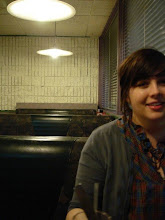 "a child from a poor family modeled a Fendi bib, which costs about $100"
"a child from a poor family modeled a Fendi bib, which costs about $100"The argument from the editors of India Vogue was that they were using real people, not models (which would normally be celebrated) and people shouldn't take fashion "too seriously". Are we also not supposed to take the people depicted in the photos too seriously? Considering the magazine doesn't identify the people
 in the photographs (only the accessories), maybe we're not. The article sited that nearly half of India's population lives on less than $1.25 a day.
in the photographs (only the accessories), maybe we're not. The article sited that nearly half of India's population lives on less than $1.25 a day.Again, I would like to ask...how do you feel about these images?
"A man models a Burberry umbrella that costs about $200"




4 comments:
The only way I see this concept as somewhat acceptable is only if Vogue is donating a certain amount of the sales from this line to the people of India. Other than that...it's pretty distasteful.
I also read that Vogue doesn't use the names of the people they have used as models. They are referred to as "lady" or "man", while there is a long and detailed explanation of the product next to it.
Well, the images are really beautiful.
But then when you learn the poverty issue mixed with the bourgeoisie fashion...it's sickening.
The question is three-fold. One are they paid for their modeling services? Two, did they sign a model release allowing the photos to be used. Three, is it helpful or hurtful for the model or the community to do the modeling and to be seen in the magazine.
The first question I don't know the answer to. I would say hope it is industry practice in editorials for large magazines, but I don't know for sure.
The second question undoubtly is answered yes. Voque would get in HUGE trouble if they did not get model releases signed. While I don't know the Indian laws regarding that I doubt the home office of Vogue in the US would allow their subsidiaries to publish without model releases.
The third question is more difficult. Is it exploitation? Yes, in someways I can see that. But could it also give the 'lower-class' indians a higher profile and status, allowing the the rest of India to see them as something other than just 'lower class'?
I saw a report recently about a 'worker of the year' award given to a woman in India whose job it was to shovel shit from below toilets in public areas. She did it all day long in bare feet. The reporter covering her could barely keep from vomiting due to the stench.
She was flown to Europe or NYC, I forget which, and given an award for the 'worker of the year' by a woman's group dedicated to publicizing and overcoming the treatment of some of the workers in those types of terrible jobs.
So the question is, was she exploited by having the award given to her and being given a new wardrobe, great shoes? Would it be non-exploitive if she was given enough money to get out of that job? Would it be non-exploitive if it brought attention to the practice and caused the Indian government to institute better hygienic practices in public toilet facilities?
Lots of questions about these issues!
I think the racialized meanings of these photos in vogue are significant. Vogue often has very fantastical editorials, featuring models in avante garde costume and makeup- these images are meant to be "exotic" and out of the ordinary.
Is Vogue trying to portray poor people of color from the global south as exotic editorials? Hmm, seems an aweful like national geographic's veuyeristic photography.
Well scratch that. It doesn't matter really what vogue is trying to do per se. It's more the effect of situating pictures of "the third world" as another fashion spread.
This goes along with the American Apparel bit posted the other day: examples of privileged people having no consiciousness of inequality and and people of the global south until they can commodify and exotify them or pieces of their culture for their own profit.
Post a Comment